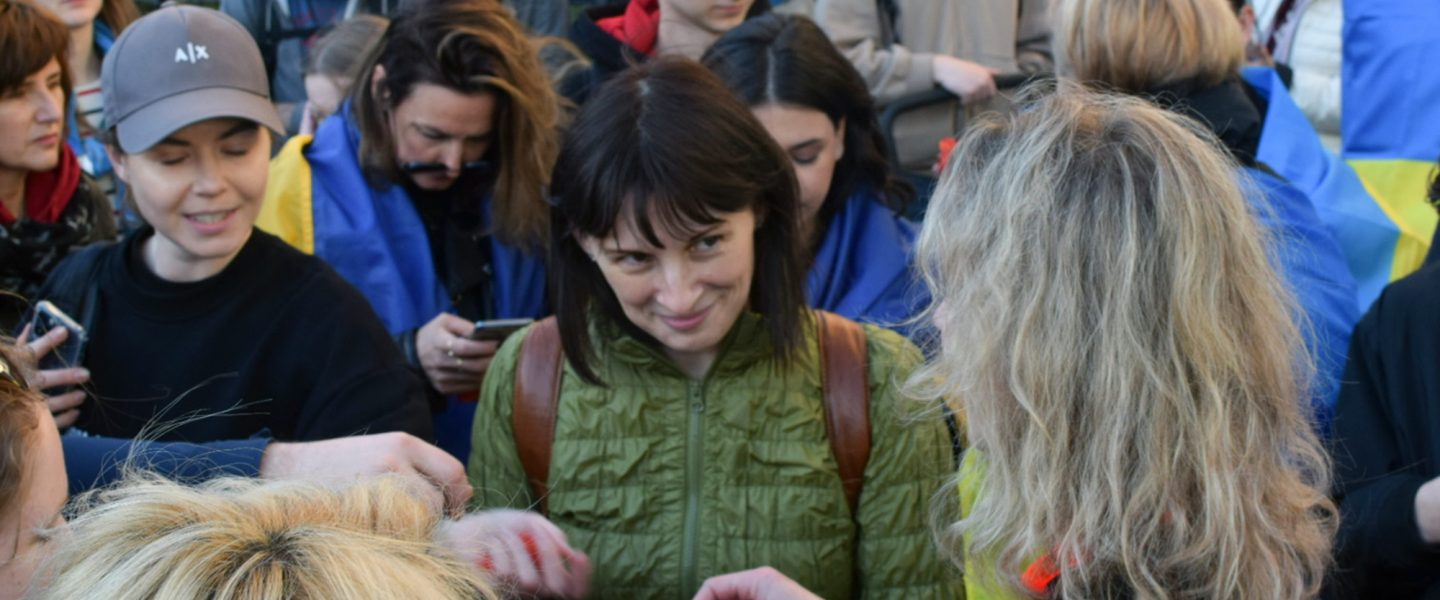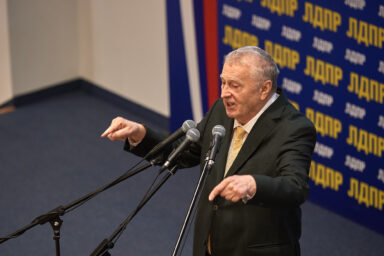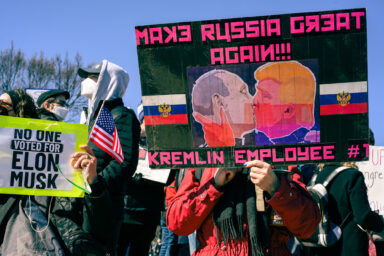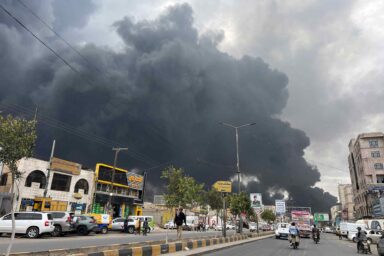For Ukrainians, a World War II anniversary of Russian victory gets complicated by current events.
|
Listen To This Story
|
Viktoriya Feshak had never celebrated Victory Day.
She knew that there were parades every year on May 9, and that people in her home country, Ukraine, held feasts to honor the Soviet army’s defeat of Nazi Germany. For decades, Ukraine and Russia celebrated May 9 as the official end to World War II, and in Moscow, annual parades have rolled through the city’s Red Square since the fall of the Soviet Union in 1991.
There are also parades in Berlin, where Feshak lives. But her family and friends don’t consider it a proud day. “It never felt like a victory or a celebration as my family suffered a lot because of the Soviet regime,” she said. “They lost property, land, and livestock because of the policy of collectivization, lived under oppression, without the possibility to express their identity.” Her grandmother called it a “blank holiday,” an event neither supported nor recognized.
And since Russia’s invasions of Ukraine in 2014 and 2022, the meaning of Victory Day has continued to evolve.
Recently, President Volodymyr Zelenskyy signed a decree to change the country’s Victory Day to May 8. The move served two purposes. The first was to align it with other European countries who because of time-zone differences marked the victory on the 8th. The other reason: to officially separate it from the Russian day of celebration.
For Feshak, Victory Day is a way of commemorating what the Ukrainians lost in World War II, rather than honoring the Soviet victory itself. On May 8, she was one of many who attended a march of mourning organized by the nongovernmental organization Vitsche Berlin in the German capital.

Dozens of people wore all black, the color of mourning, as they passed along the same streets where Ukrainian forced labor workers once spent days in jobs at the Telefunken radio and television company. The site was one of the last battlegrounds in the German capital, where in the days leading up to Victory Day the Soviet army forced the Nazi regime to surrender.
“It is important for us to commemorate the victims and the pains of the Second World War,” said Vitsche Berlin board member Eva Yakubovska, a woman from Lviv.
An estimated 5 to 7 million Ukrainians were killed in six years of war. This year’s May 8 celebration comes when more than 8.2 million Ukrainians have been forced to flee their homes since the war began, with over a million registered in Germany alone.
Some mourners sang Ukraine’s national anthem, while others wrapped the country’s flag around their shoulders or waved it in the air. This too was a change from last year, when Germany banned all Ukrainian and Russian flags from being displayed.
But in 2022, conflict arose anyway. At Berlin’s Tiergarten Memorial, Ukraine’s then-ambassador to Germany, Andriy Melnyk, was ridiculed by pro-Russian protestors who screamed “Nazi” at him as he placed flowers near a statue of a Soviet-era soldier.
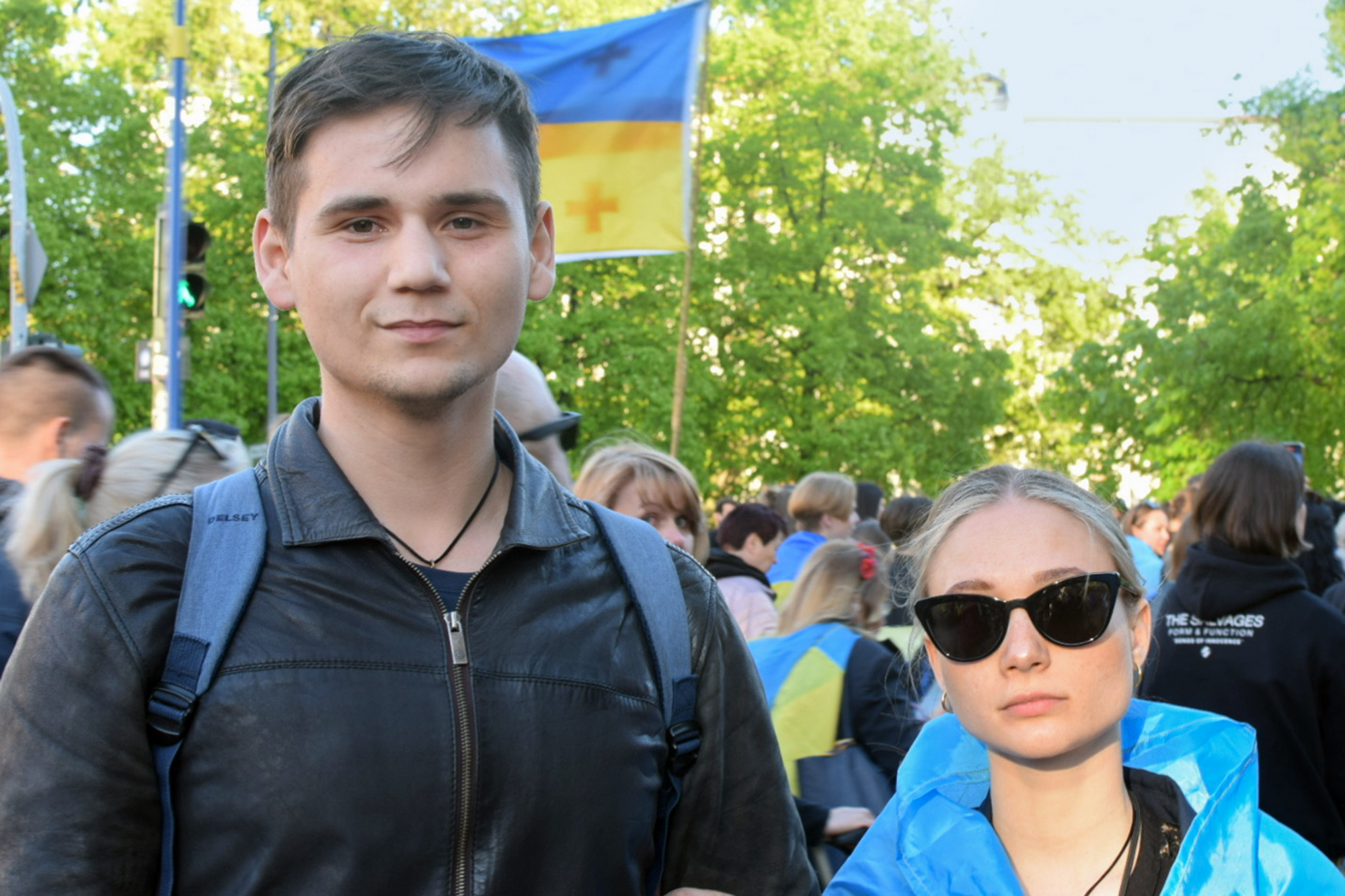
Marching in this year’s procession, Ukrainians Krista-Marija Läbe, who grew up in Germany, and Anton Douginet, who has lived in the country for over six years, told WhoWhatWhy about last year’s Victory Day chaos.
“Russians were running around with other flags, with Slovakia or Serbia, wearing matching clothes [with the colors of the Russian flag],” said Douginets. “The moment someone tried to go to the memorial wearing blue jeans and a yellow hoodie, the police had them removed. And then you walk in and have Russians screaming. It was a pretty traumatic experience.”
This year, activists with Vitsche Berlin took a stand, demanding a separation between Ukraine and Russia. The group sued the Berlin police department for the right to wave their flag freely.
“[Germany] argued that they don’t want to glorify the war. They said, ‘Ukrainian, Russian, that symbol, all in common,”’ said Kateryna Derdiuk, an activist with Vitsche Berlin from Kyiv. “For us, it’s completely different things. [The] Ukrainian flag is not glorifying the war. We’re fighting for freedom. This year we decided to do something about it.”
The Russian flag, though, is still forbidden.
“We are happy the ban was lifted,” Douginets said. “There was a political reason because they tried to equate the aggressor and the victim, but there’s also the practical reason because last year, they had the same thing.”
In this year’s march, there was a sense of uncertainty around the mourners at the Ukraine march. Läbe noted that they could be targeted at any time. Just nine days before, Pro-Russian bikers rode through the streets of Berlin with the letter “Z” fixed onto the vehicles. The letter has symbolized Russia’s “special military operation” in Ukraine since the first month of the war.
And in Ukraine on the night of May 7, Russian missiles targeted Kyiv, Odesa, and Kherson.
Victory Day in Europe has been a commemoration of the past, trapped in amber. But since the invasion of Ukraine, the anniversary seems to be in a state of flux — the meaning of flags, colors, even dates shifting. History may not be exactly repeating itself, but it’s certainly being quoted at length.
“To go to bed last night, it’s still memorial day, end of the Second World War, and Ukraine had so many victims,” said Läbe. “Today, in the morning, there was an air alert in all of Ukraine. It’s basically always going on and on.”
